SmartBees Newsletter 2, February 2016
This is the second newsletter of the SmartBees project. Today you receive an update on several meetings we held during the last months as well as news on the BeeBreed project and our surveys which are addressed to beekeepers and breeding coordinators
- Meeting for SmartBees’ national breeding coordinators in Kirchhain
- Survey for the national breeding coordinators in SmartBees
- Translation of the web interface "BeeBreed.eu" into other languages
- SmartBees’ survey for beekeepers in Europe
- Establishing a conservation network for European honeybee subspecies
- Report on the activities by the National Bee Unit (Fera) in 2015
The national coordinators for SmartBees breeding activities met in Kirchhain on 1st-2nd December 2015. The meeting was organized and hosted by the SmartBees partner LLH (Bee Institute in Kirchhain, Germany). Among the topics discussed at the meeting were the SmartBees Protocol for Performance Testing and the detailed procedures of how to assess the individual performance traits. Kaspar Bienefeld (LIB, Bee Institute in Hohen Neuendorf), the coordinator of the SmartBees consortium, presented the concept and strategy for sustainable honey bee breeding in Europe and harmonization to the existing www.beebreed.eu database. Klaus Ehrhardt, from the same institution, presented the use of the mentioned database and the methods used for estimation of breeding values. Thus, the beekeepers who run testing apiaries will enter the data from the performance testing into BeeBreed and provide data for estimation of breeding values of the tested queens.
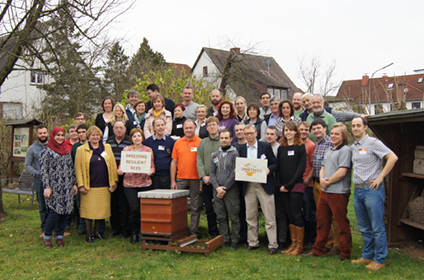
Ralph Büchler from the Bee Institute in Kirchhain, presented the contemporary methods for testing, selection and breeding of bees for resistance against Varroosis, including VSH trait. Finally, the SmartBees’ extension specialist Magnus Ljung at SLU (Sweden) also trained the national coordinators in extension techniques.
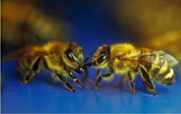
The main purpose of the information requested in the survey is to model scenarios to recommend the optimal breeding strategy. It will also allow an assessment of the current status of beekeeping and breeding in the partner countries and a comparison can then be made. The starting point of SmartBees activities are the national traditions and practices of beekeeping and breeding ranging from the predominant use of important queens to established breeding structures. This information will enable a different focus in each of the partner countries. While in some countries breeding starts from scratch, in others raising awareness of the native race and its potential is more important. Different breeding strategies will be adopted, depending on the population size and breeding infrastructure.
Another purpose of the survey is to thoroughly understand the reasons for the preferences of the beekeepers. Often, native races are associated with aggressiveness, low yield, swarming, and disease susceptibility, but this is very different between countries. While in some countries imported colonies offer no advantage, in others the native bees are barely manageable. Thus, in some EU countries, rapid breeding success is essential for the native bees to become acceptable at all, while in others a slow sustainable breeding progress and advertisement of the native bees' qualities can be aimed for.
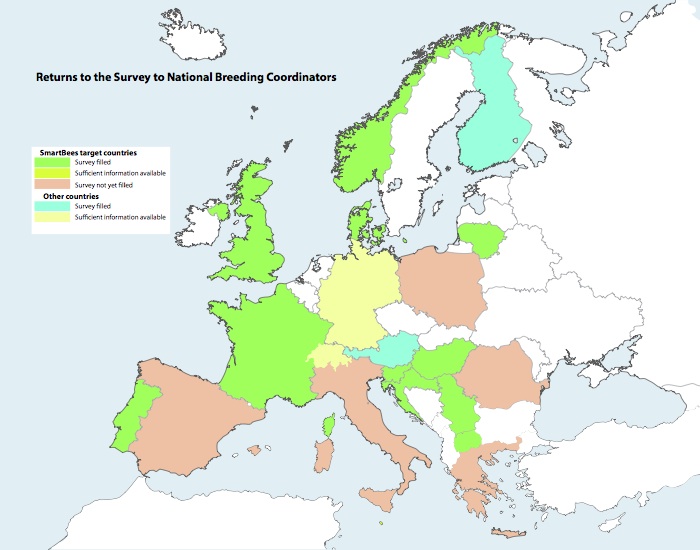
Map: Current situation for the survey response by national breeding coordinators
The breeder faces the difficult decision between low or highly selective breeding, on the relative importance of the desired properties, and has to consider inbreeding and the economic development of his business. These decisions can be supported by mathematical models. Inbreeding can be calculated in advance; the more of the ancestry of the bees is known, the better. The inheritance of traits and their co-variance is known based on experience in the German breeding system, so a forecast can be made of how quickly respective traits can develop. Based on the specific conditions and constraints for a national breeding program, an optimal breeding strategy can be suggested which takes into account all of the desired traits. As an example, inbreeding has two aspects, homozygosity, which has immediate adverse effects, and the reduction of the genetic diversity which may show its effects only in the long term. Therefore, a suggested strategy will also account for the sustainability of the impact of the breeding to national beekeeping.
The breeding value calculation at the LIB was developed for Germany and neighbouring countries and there is a perception that some of the assumptions are not valid for other countries. The survey identifies necessary changes to adopt for partner countries. For example, the productive seasons may by quite different in southern European countries where the bees face a dry period in the summer and may breed in the mild winter. The performance testing will be adapted, and consequently, the technical parameters of the calculation have to be readjusted.
The web interface BeeBreed.eu, developed by the LIB, covers studbook data, performance testing protocols, breeding value prediction and dissemination, analysis of race characteristics and many more items.
As it was initially developed for Germany, the website pages are in German. However, for the service to be acceptable for all European countries, we need a translation into more European languages, and a more systematic approach to the translation process is necessary. The translator needs to know the technical terms of national beekeeping, therefore the national breeding coordinators agreed to undertake the translation. As the breeding coordinators are not professional translators, they require an easy-to-use protocol for the translation process. The translation of short phrases in isolation is difficult and error-prone, as the short phrases have a meaning in the context only. Therefore, the translation functionality was added to the BeeBreed website.
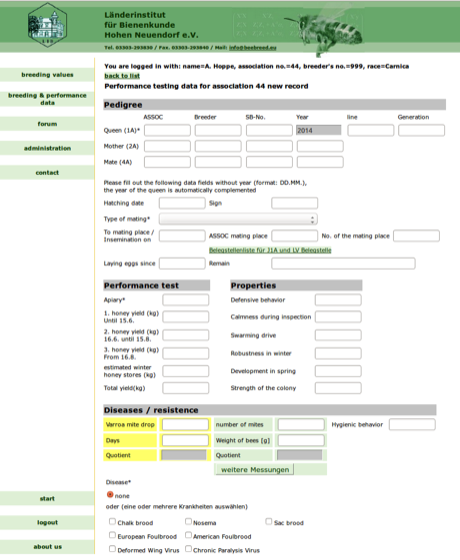
The web interface BeeBreed.eu will be translated into many European languages and will be ready to use for entering the data from the performance test that will be completed in 2016.
A translation tool for each specified European language is now available in a special web front end at www2.hu-berlin.de/beebreed/translate, and a manual was distributed at the SmartBees meeting in Kirchhain. In-context editing is possible as well as editing within tabular listing of all phrases. This allows an easy way to translate together with hints, warnings and error messages which are not visible permanently. Once the translation process is complete for a specific language, it will be visible in the pull-down language menu to all users for all subspecies. Some of the SmartBees partners are already eagerly translating!

It was launched through the SmartBees web page in spring 2015 and is now available in 10 European languages. The survey was advertised in regional beekeepers’ journals and at beekeepers meetings to raise attention and maximise participation of beekeepers. It was also promoted through links on the websites of beekeeping associations, scientific organisations like SICAMM and COLOSS, and institutes (SmartBees partners and others).
The questionnaire covers nine different topics, four of which are related to the choice of bee (native or non-native subspecies), honey bee diversity and breeding. The majority of the 20 questions related to honey bee diversity are in multiple choice format, in order to ensure that answers are comparable between countries and regions.
Over 5000 replies have been received thus far, but we hope that we can motivate even more beekeepers to take part. You have the chance to share your views and desires for the future of beekeeping, both in regards to honey bee conservation and beekeeping development. We know that beekeepers need on average 16 minutes of their time to help us with their replies to the questionnaire. We are very grateful for this high degree of involvement and will use this wealth of information for improving the beekeepers’ situation in the coming years.
The evaluation of the thousands of replies will assist us in improving the currently available extension methods. We will generate a new toolbox with educational information and training material, in accordance to modern methods and your needs for sustainable beekeeping. We wish to contribute to the development of strategies for the conservation of honey bee diversity and breeding programmes for beekeepers to maintain and breed bees that are well adapted to their region.
The survey is active until mid-May of 2016 to maximise the response rates and to ensure an optimum representation of the European beekeeping community.
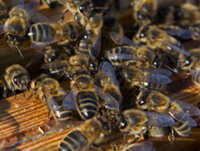
So far we have had responses from 16 groups keeping Apis mellifera mellifera, and four groups keeping A m carnica, whereas A m ligustica, A m iberiensis, A m siciliana and A m ruttneri are all represented by one group each. The survey is currently only available in English, but may be translated into more languages.
Many of these conservation groups/organisations and conservation areas face common problems and challenges independent of the honeybee subspecies. By establishing a network of such conservation areas and organisations we hope to make it easier for them to learn from each other’s experience and give them stronger arguments for their conservation efforts and raise public awareness for their important role in protecting Europe’s biodiversity.
The establishment of this conservation network is an ongoing activity and the survey on the SmartBees website will be open throughout the project period. We need your help to make this network as complete as possible. If you are a member of a conservation group for a honeybee subspecies, make sure that your own organisation is part of the network!

The conservation area for black bees Apis mellifera mellifera in southern Norway covers about 3500 km2. In this area, about 50 beekeeper keep some 800 colonies (photo: Hege Vatland Hvidsten).
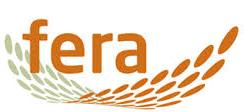
We took part in the development and delivery of a bioassay alongside collaborators in Italy, to investigate resistance in honey bees to Deformed Wing Virus. Through a series of controlled laboratory experiments, carried out without the interaction of Varroa, we used microinjection to look at how the route of virus infection alters disease progression. These bee samples will now be sent for DNA sequencing to look at the genes involved in resistance mechanisms.
We have also helped with the development and interpretation of the beekeeper survey. This aims to better understand the motivation and culture of beekeepers when it comes to their choice of honey bee strain, and will feed back into many aspects of the project. One of the largest pieces of work that the NBU has been involved in this year is the establishment and support of the breeding apiary network across the UK. We held a training event for bee keepers who were keen to be involved. Despite a challenging bee keeping season for us in the UK, from non-favourable weather, we have managed to help several breeding/performance testing stations to become established and hope that next season this will increase as more beekeepers hear about the project.
More information about FERA
